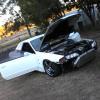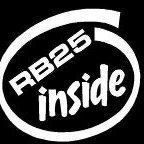Rear Main Seal (RMS)
Announcements
-
Similar Content
-
Latest Posts
-
There are adaptors that allow you to delete the booster and use an s15 clutch master cylinder. if you want to keep the booster they are still available brand new
-
I visited again today: It would appear they have painted the main body of the car and some parts of some of the panels, so I can say that I now have BMW parts in my car, much to the envy of @Dose Pipe Sutututu It is still covered in dust which is quite the tease but I did look at a few circumspect spots that will be behind bumpers and such and wiped some dust away: After my repeated begging to PLEASE DONT PAINT OVER THE ENGINEERING CERTIFICATE (you have to re-engineer the entire car if they do) I see THIS: Which is great. Excellent job tbh at least to me. A better non dusty example would be the backs of the doors that have been painted: Giving a reasonable contrast between old and new (I know the old isn't clear coated on the inside of doors). The door card will well and truly cover where the old paint is, you can see in the second pic some of the black butyl/whatever shit is sticking the plastic sheet behind the door transfer that has happened since it's clearly been stuck back on. The most maddening thing about this colour is every time I saw it in the wild it looks like another colour, same with photos of many cars with the same colour looking wildly different in every photo anybody ever takes and this is no exception. But stand a little further back and it suddenly looks dark AF. I did tell them when I was discussing which of the 70 million charcoal colours to choose from (a porsche one, a BMW one, or a R32 GTR one etc) that if they just ignored me and chose one at random I would probably never notice. Maybe they did. But the colour is supposed to be B39 (BMW Mineral Gray). Boring I know, but the R34 sedan (to me) really shows off it's boat-ness when you paint it in a bright colour like bayside blue or white or whatever else. I do have a fondness for AR2 Nissan Red, but decided against that because it'll have pretty odd contrast to random bits unpainted (like engine bay, bits of trim etc, and maybe it'll fade). And people will always fkin comment on AR2. Everything remains super dusty. I have tracking numbers for the new heads, as well as some Improved Racing goodies, but they probably will be a next year thing by the time they end up on the car. I did some maths on the heads and I know why nobody goes to this extent in Australia, because it's really not worth it, given I could have just CNC'ed my current heads, bought a FAST102/TB and used my current rocker/spring/cam combination and get a 383 stroker (or stroked a 6.0 GenIV bottom end to 6.6L) built for the same price of just the setup in the mail/on the floor here. Or I could have bought a LS3 and a Drysump system. And then have a complete engine to sell. Oh well
-
By weikleenget · Posted
We just disconnected the vacuum line if I remember correctly, booster is still there. Is there a rebuild solution for the booster or a different adapter that will work for GTR chassis? -
Yeah 4wd (boosted) has a recess in the firewall for the booster, and 2wd is flat - the example in the link shows the flat surface. When you deleted the booster, did you just attach the factory slave cylinder directly to the recess in the firewall with no adaption?
-
Yes, but no. You need to keep the mating surfaces bare (ie the flat faces where the caliper and upright pads touch the dogbone) and also the internal threads will remain bare (unless there are no internal threads - do they use nuts on all the bolts?). So you can slow down obvious external corrosion, but not all of it. Anodising would be required to provide decent protection to the alloy, but I'm not actually sure if you should anodise something that is all about the strength. Anodising does reduce strength significantly. Like, up to 50% on some alloys for high thickness coating.
-





Recommended Posts
Create an account or sign in to comment
You need to be a member in order to leave a comment
Create an account
Sign up for a new account in our community. It's easy!
Register a new accountSign in
Already have an account? Sign in here.
Sign In Now